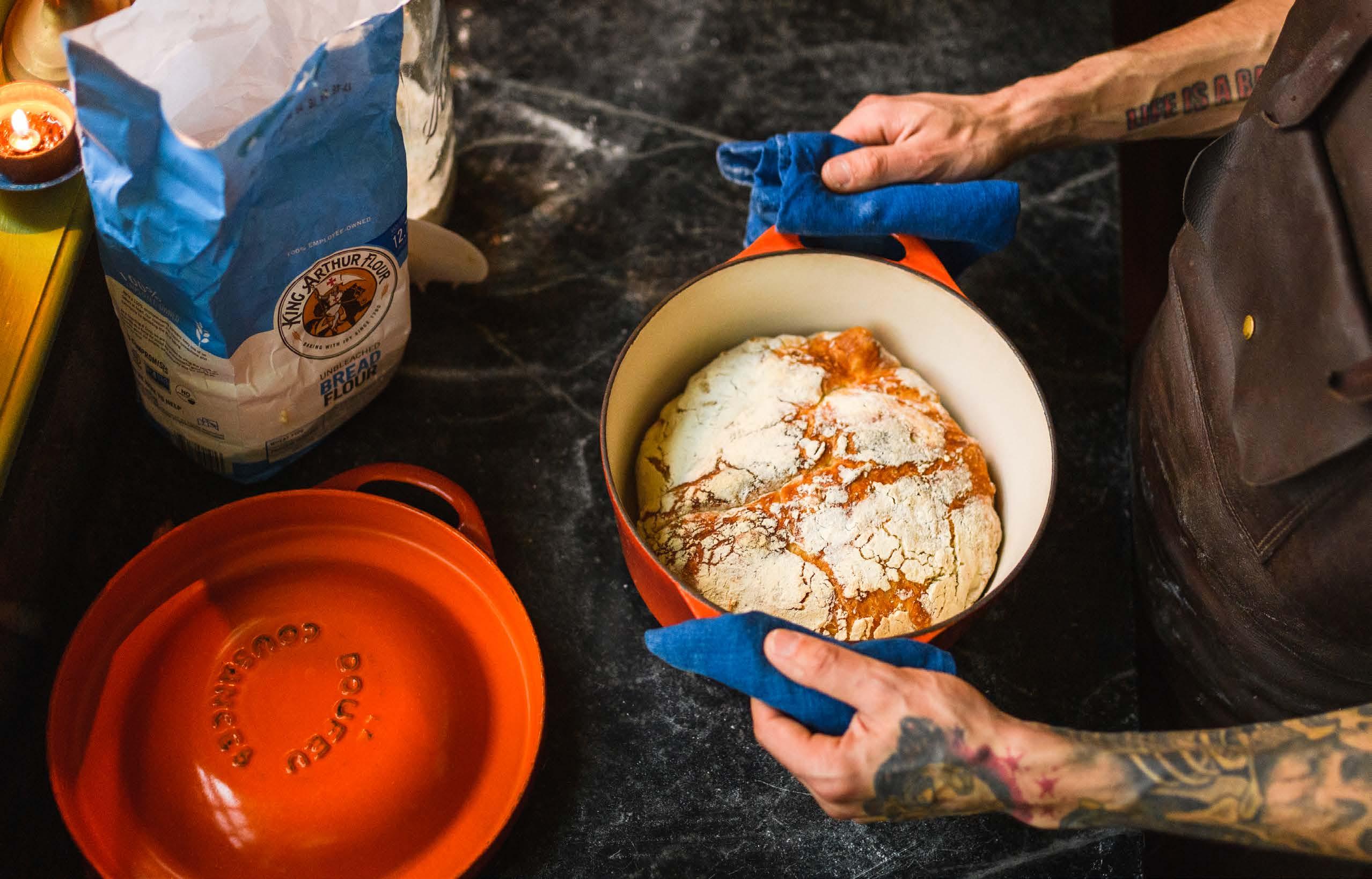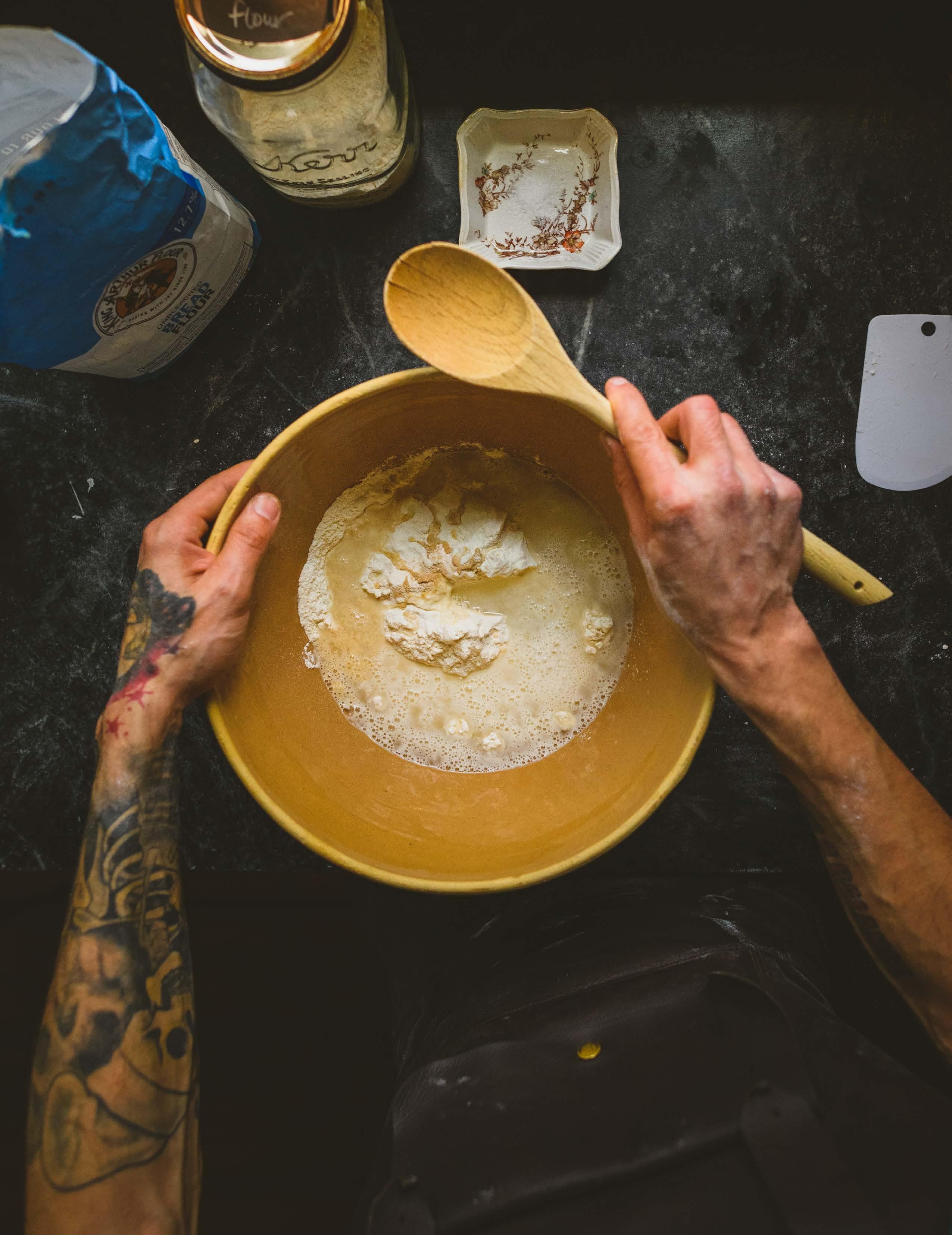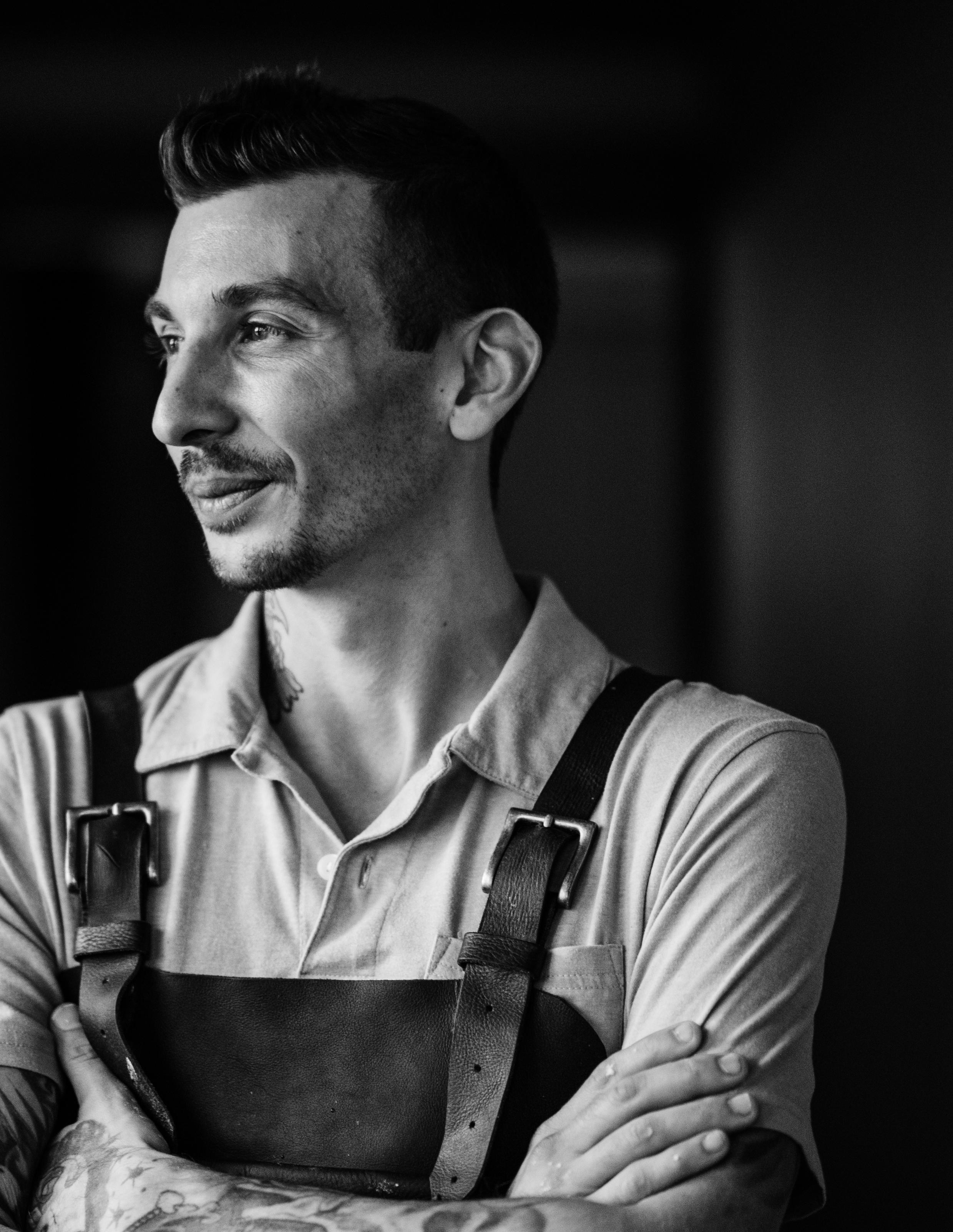
8 minute read
To Break Bread, Let’s Make Bread: Cast Iron Cooking
T O B R E A K B R E A D, LET’S MAKE BREAD: Cast Iron Cooking

Advertisement


You’ve heard the question before:
“What would you grab if you knew you had to leave the house in a hurry?” Strangely, the two items I’d grab are the heaviest: my 1940s-era, charcoal grey Royal typewriter, and my cast iron skillet. Many chefs would agree; its elegant form, durability, and ability to heat through-and-through make it a much beloved kitchen item.

Today’s home cooks and chefs are going back to basics with equipment and ingredients, and there’s nothing that harkens back to basics more than a cast iron pan, or its robust cousin: the cast iron Dutch oven. In the 17th century, the depth and shape of the Dutch oven allowed for a range of soups, stews, and casseroles to cook hearthside. In the mid-19th century - before ovens and stove top cooking became popular - cast iron skillets were created and added as another signature tool around hearths or campfires. And at that time, there were just a few foundries and manufacturers creating them, like Lodge, Wagner Ware, and Griswold. Lodge is one of the only still in existence today, and has been owned and operated by the Lodge family since 1896.


In the 1960s and 70s, when kitchen convenience reigned (think non-stick cookware), cast iron cooking fell out of favor. Many manufacturers were bought out or went out of business altogether. Thankfully, cooking styles are now coming full-circle, and chefs and cooking shows are reminding us to respect the simplicity of quality ingredients and tools. The cast iron Dutch oven and skillet have pushed their way back to the forefront once again.

And what could be more beautiful, simple, and hearty to make - in the equally beautiful, simple, and hearty cast iron Dutch oven - than bread?
On a cold and rainy Sunday, Chef Carlos Perez joined photographer Winter Caplanson at her beautiful 1790 Bailey Farm in Franklin to make and break bread in an AGA cooker. The ambience could not have been more perfect: rain outside, warm and cozy inside, with cups of tea and the aroma of yeasty, fresh bread making its way around the house. It could well have been the set of “Little House on the Prairie:” the personification of all that is earthy and cozy. The Scandinavians would call it a moment of hygge, which is all that fosters a



Chef Carlos prefers the “no-knead bread” method of bread baking. It uses a very long fermentation time instead of kneading in order to form the gluten that gives the bread its dense texture. So, low yeast content and a very wet dough. The bread is all the more enhanced in texture, flavor, and crust. And, by baking it in a cast iron Dutch oven, where heat and moisture are held inside...well, magic happens.
His favorite recipe is adopted from Jeff Lahey at Sullivan Street Bakery in New York. It yields one half-pound loaf that is undeniably golden and crusty on the outside - and warm, chewy, and dense on the inside. The ingredients are straightforward, and there’s no fancy equipment; the only hard part is waiting the 24 hours needed for the dough to ferment, and of course, the waiting once it is in the oven and the intoxicating aroma of fresh bread wafts throughout the house.

“Cast iron bread baking
truly brings out the best
qualities of a perfect loaf.
From the crunchy, rich crust, deep flavor from the long fermentation, and light, airy crumb, this method truly makes the ingredients do all the work for you,” Chef Carlos says.



HOME BASE RECIPE
INGREDIENTS 3 cups of bread flour ¼ teaspoon instant yeast or 1 tablespoon sourdough starter 1 ½ cups of warm water 1 teaspoon salt

FIRST STEP Add flour, yeast, and water. Mix in a bowl until you have a “shaggy” mess, then add the salt and stir briefly to incorporate, Chef Carlos explains. And, it’ll be quite sticky. You’ll want to keep it coarse, cover it, and let it sit out at room temperature for 18-24 hours so the dough can ferment.

SECOND STEP See the bubbles? That means it’s fermenting, which will create a nice, full-flavored tang. Lightly flour your work surface and pick up the dough to reshape it. Fold over from each corner, then cover with a towel. Let it rest for about 15 minutes. The dough is continuing its magic here while you let the gluten relax.


THIRD STEP Reshape the dough until it is round. In this step, the dough is proofing, where the fermentation continues and the dough rises to approximately double its size. Cover and keep on the counter for another 2 hours.

“ B y b a k i n g i i n a c a t i o n D u c h o v e n , a e h e l d i n s d

w h e e h e a a n d m o i t u e d e . . . w e l , m a g i c h a p p e n s .


FOURTH STEP 30 minutes before the 2 hours is up, heat your oven to 450 degrees. When it’s preheated, put your cast iron in. When the dough is ready, after 2 hours, flip it over into your cast iron pan, so seam side up. Place the lid on top. This traps the humidity for moisture and yet allows the yeast and the loaf to expand. The bread is in the oven for a total of 45-55 minutes, depending on how dark you want the crust. Chef Carlos normally does 35-40 minutes with the lid on, then 10-15 minutes with the lid off.


VARIATIONS/ADDITIONS:
1) Substitute ½ cup of wheat flour, then increase water by ¼ cup
2) Add ½ cup of currants, walnuts, and orange zest
3) When shaping the dough in the third step, add 2 cups of cheese. A favorite variation: ½ cup each of cheddar, fontina, gruyere, gouda - and ¼ cup scallions

4) Before fourth step, dust dough with oats, caraway seeds, fennel, onions, and/or everything bagel seasoning

Chef Carlos is just moments from the opening his newest venture, Chez 180 in Westport. He has trained under the greats from The French Culinary Institute, and has made his way in and out of some of New York City’s top restaurants before returning home to Connecticut. After operating La Palette Bakery in Watertown for 13 years, he and his team hope to bring a whole culinary experience ranging from sweet to savory to Westport and beyond.

So, this winter, on wet, snowy days when all you want to do is hang inside around the fire in your PJs, bring out the Dutch oven, gather in the kitchen, and make bread. Invite your neighbors over, try one of the many variations above or create your own. Then, turn the tea kettle on and break bread.











